Everywhere there are Shia Muslims, there are Muharram ceremonies. What you will see and feel during your trip to Iran(Muharram in Iran), nevertheless, goes beyond ceremonial worship. Iran presents not just a religious event but also a historical moment ingrained in the core of a fantastic national culture. It might not initially appear exciting to travel to Iran during Muharram. A visitor, however, will be in awe of the first ten days of this lunar month, especially as it approaches its peak: Ashura.
In locations where locals congregate to conduct religious rites, tourists from all over the world are warmly welcomed. You can participate in a wide range of customs and practices or you can just take in the unusual surroundings. You can gain a new perspective on the close ties that the people of Iran have to both their religious and cultural identities by traveling there during the month of Muharram. If you want to travel to Iran at the time of Ashura, here is all the information you need.
Understanding Ashura in Iran
Ashura and Muharram celebrations for Shia Muslims in Iran are one of the most significant and crucial times of the year, and they may be quite stunning. You would suppose that it makes sense to avoid traveling to Iran during the Ashura or to go there during Ramadhan and the country’s most important religious event, just as you would avoid traveling to China for the Lunar New Year or to Europe for Christmas.
However, a trip to Iran during Muharram and Ashura may be a fascinating time to visit the nation as it offers unique insights into Shia Muslims and the friendly nature of the Iranian people. One of the finest ways to learn about Iran’s dominant religion and to see the country’s culture in a fresh and personal way is to travel to Iran at the time of Ashura.
History and Origins of Ashura in Iran
Every year, when the first days of the first lunar month get closer, people take to the streets dressed in black to remember what happened to Husayn ibn Ali, or Imam Hossein, the Prophet Muhammad’s grandson, and his family as well as 72 of his supporters at the Battle of Karbala. The two most important holidays in Iran are Muharram and Ashura, which falls on the tenth day of Muharram.
As a result of Shia Muslims’ belief that Imams are to succeed the Prophet Muhammad’s throne and Sunnis’ denial of Ali’s claim to be the true successor, the dictatorial authority of the Umayyad caliphs prevailed, and Imams were forced to swear allegiance to them one after another. Imam Husayn, on the other hand, resisted swearing allegiance to the Yazids, and as a result, the battle of Karbala, which was fought in the Iraqi city of Karbala in 680 AD, took place.
For the Iranian people, it goes beyond a conflict between two armies. Standing on one side was the Right, led by Imam Husayn, a magnificent leader who epitomized courage, honesty, and justice. On the opposite side was the army of Yazid, the Umayyad caliph, which included hundreds of men who refused to move in support of their oppressors’ oppression and brutality by depriving them of water. Even though Imam Husayn was defeated and killed, the terrible events of those ten days served as a powerful reminder to reject evil and make sacrifices for the sake of others.
People in Iran experience and express their deepest emotions as if they were among the 72 followers who were battling against the wrong in commemoration of this crucial historical event. When people hear the elegies’ words recounting Yazid and his army’s horrible conduct, they begin to beat their chests and cry as a way of expressing their sadness and agony for Imam Husayn.
What Makes the Battle of Karbala So Tragic?
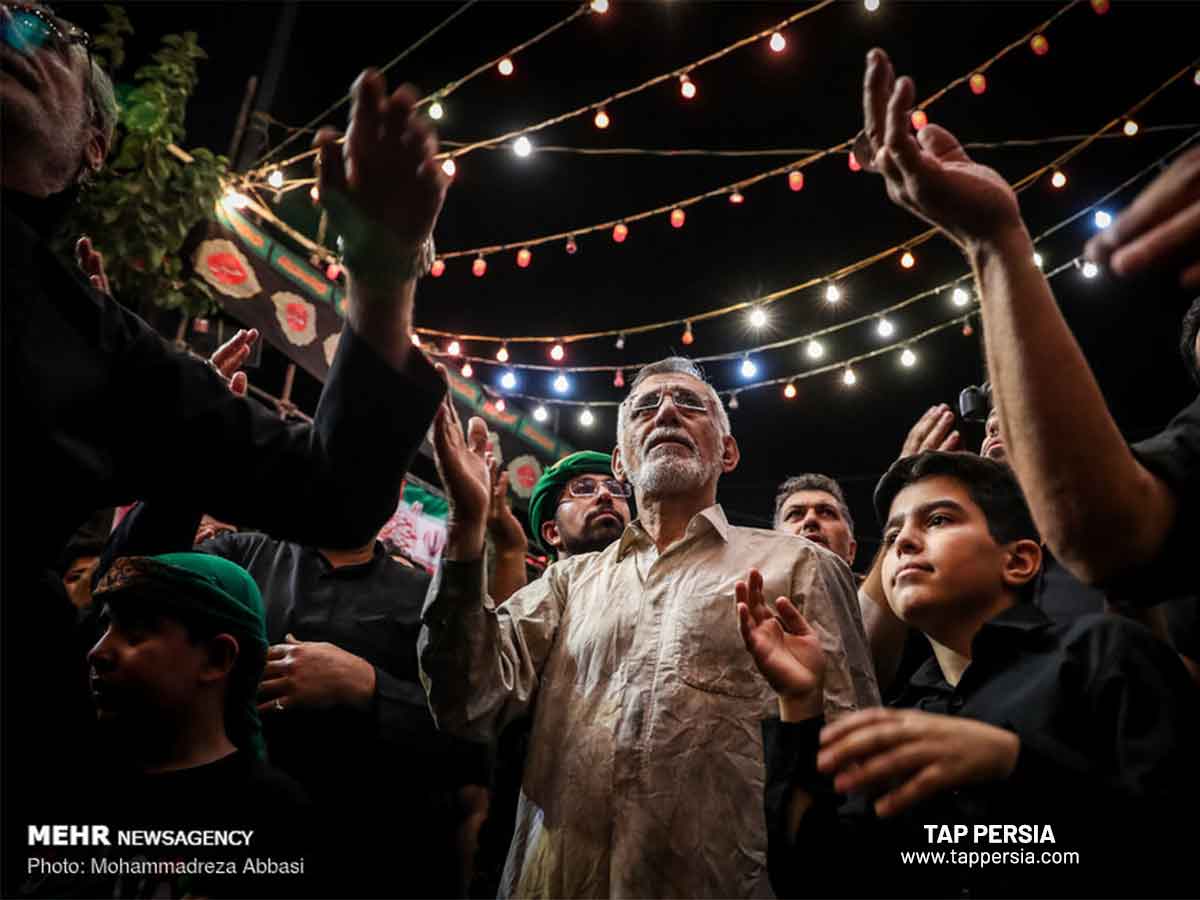
In the year 680 AD, there was a fight in Karbala. That was so long ago! On the day of Ashura in Iran, however, the celebration grows larger every year. There are several explanations for why Muslims view this conflict as particularly unusual, especially if you are interested to travel to Iran at the time of Ashura:
- The combat was quite lopsided between the two sides. In front of tens of thousands-strong army, Imam Hossain and his 72 comrades.
- Children and women were not exempt. Many people were slain, including Imam Hossain’s son Ali Asghar, who was just 6 months old. Others were embarrassed and departed.
- Days before the war, Hossain and his relatives were forbidden from drinking water. Many kids succumbed to thirst. When they sip water, many Shia Muslims still respect Imam Hossein.
- Essentially, the ideology of Karbala is centered on opposing evil, celebrating freedom, and defending justice. It now serves as motivation to fight against all forms of injustice.
- By midday, the combat was over, but the damage it left behind was even worse. The celebration is made even more spectacular by acts like transporting Imam Hossain’s head to a feast hosted by the constituents and various forms of humiliation.
- Of those who survived, Imam Hossain’s sister Zaynab and the new Imam Zayn-ol-Abedin can be named in this incident. Some of the most important facts that Shias cling to include their subsequent leadership of the resistance, speeches, and grieving with the goal of enlightening the populace about what had actually occurred.
- Numerous additional terrible aspects of the incident exist, and they are frequently the basis of songs and recitations.
- The tradition of grieving for heroes, such as Ashura, dates back to pre-Islamic periods when Siavash’s passing was lamented. So for Iranians at the time, this was nothing new.
Exploring Ashura Rituals in Iran
As you travel to Iran at the time of Ashura, you are invited to observe a variety of ceremonies in different forms in every city or town. Everywhere, individuals perform specific religious rites that are known as their own and unique to that location. Even the most typical form of performing these rituals—mourning while beating one’s breast or flagellating oneself with chains in mosques and prayer halls—can vary depending on the city. With the rhythm of drums and the sound of vocal music, many groups with various customs and traditions walk about the city while marching while holding aloft the Alam (the battle standard).
1.Nazri: Offering food and services as acts of devotion during Ashura
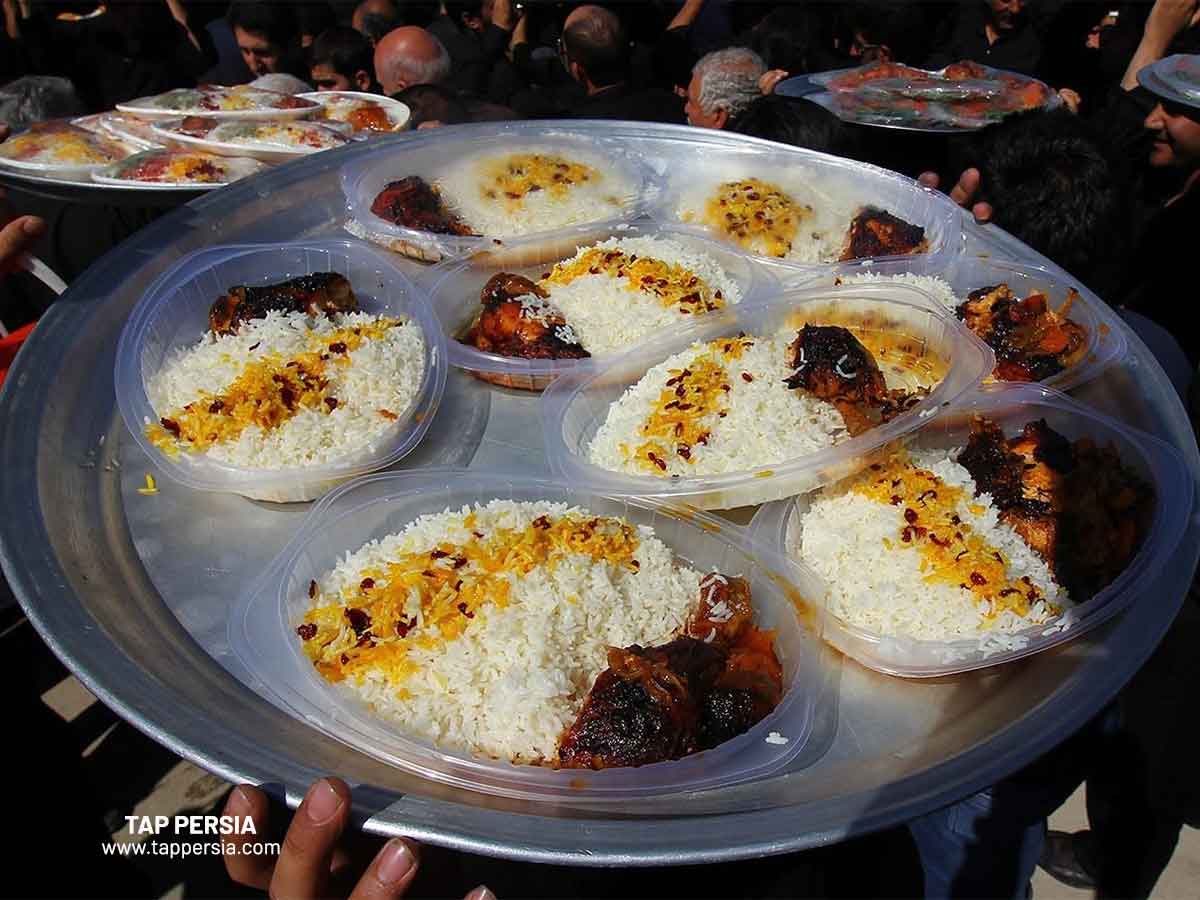
Everywhere you go, there are vendors that will give you complimentary sweet beverages, hot tea or regional delicacies. In Persian tradition, making a vow (Nazr) to Imam Husayn involves promising to share food with others, especially the impoverished. Shia Muslims consider eating this cuisine to have healing benefits since they think it is dedicated to God and Imam Husayn. What could be more pleasant than to hear the voice of the kind Iranians welcoming you to their homes and mosques where they will give you Nazri? One of the most popular foods during Muharram is “Gheymeh”, a thick stew made of braised lamb and split peas that is eaten with rice. Travel to Iran at the time of Ashura to try this amazing Iranian cuisine.
2.Nakhl-Gardâni: Understanding the symbolic procession of the Nakhl
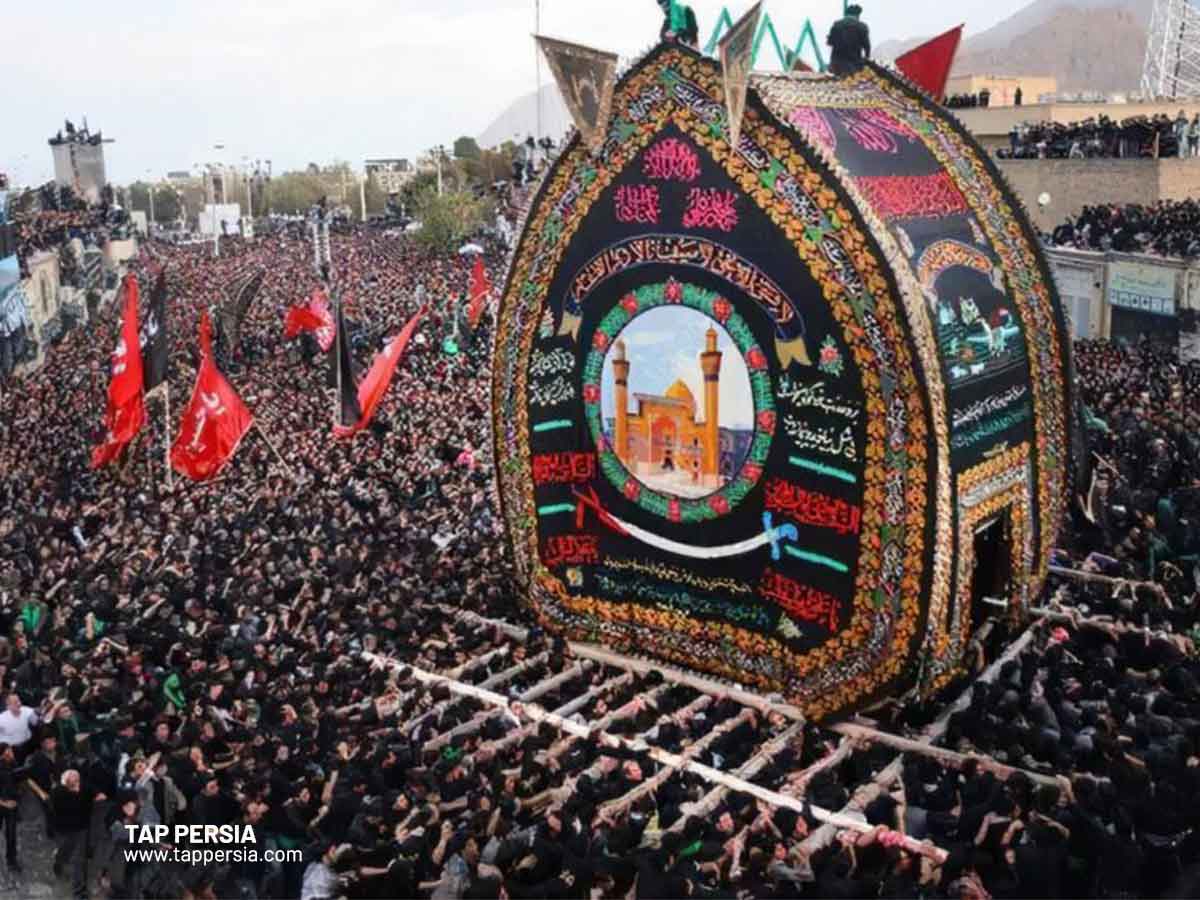
One of the ceremonial traditions that people in many Iranian cities adhere to is Nakhl Gardani. In Ashura, participants in this event hoist and carry a big, magnificent wooden construction on their shoulders. It is a representation of Imam Husayn’s decapitated body being carried in Ashura on a stretcher made of palm leaves. Swords, flags, and textiles in the colors of black and green are used to adorn Nakhl to symbolize the area’s link to the Battle of Karbala. Every year, hundreds of visitors, both domestic and foreign, travel to Yazd to see the renowned Nakhl Gardani. Hundreds of Iranian men utilize their strength to move the enormous wooden construction around the Amir Chakhmaq Square as part of the traditional Nakhl Gardani rite in Yazd.
Prior to the advent of Islam, Iranians performed a ceremony akin to Nakhl-Gardâni called Siavashoon in honor of the mythical figure Siavash. In Yazd and the nearby town of Abyaneh, the most well-known Nakhlgardani ceremonies take place. So if you happen to travel to Iran at the time of Ashura, get to experience this unique ceremony as well.
3.Ta‘zīye (Shabih-Khâni): Theatrical performances depicting the tragedy of Ashura
Ta’zieh is the modernized version of ancient Persian theatre that originated in pre-Islamic Iran when Iranians conducted passion plays in remembrance of Siavash, a mythological Persian prince who was also unjustly executed, in the third millennium BC. This kind of theatre has been prevalent up until the present. But when Islam’s popularity grew, its cultural symbolism was fused with religious symbolism.
Nowadays, Ta’zieh is performed in all towns and villages to commemorate the terrible story of the Battle of Karbala and to represent it. The performances start on the first day of Muharram and continue until Tasu’a, the ninth day of Muharram, and Ashura, where they reach their most dramatic and moving points. Cities with renowned Ta’zieh performances include Tehran, Isfahan, Natanz, Arak, Yazd and Khomeini Shahr. Do not allow the thought of taking in a Ta’zieh pass you by. And keep in mind that no two performances are identical; different details are done in various locations. After all, witnessing the tents catch fire and experiencing the finale of the reenactment may be a profound experience if you want to travel to Iran at the time of Ashura.
4.Gel Mali (Mud Rubbing): A Symbol of Loss and Grief
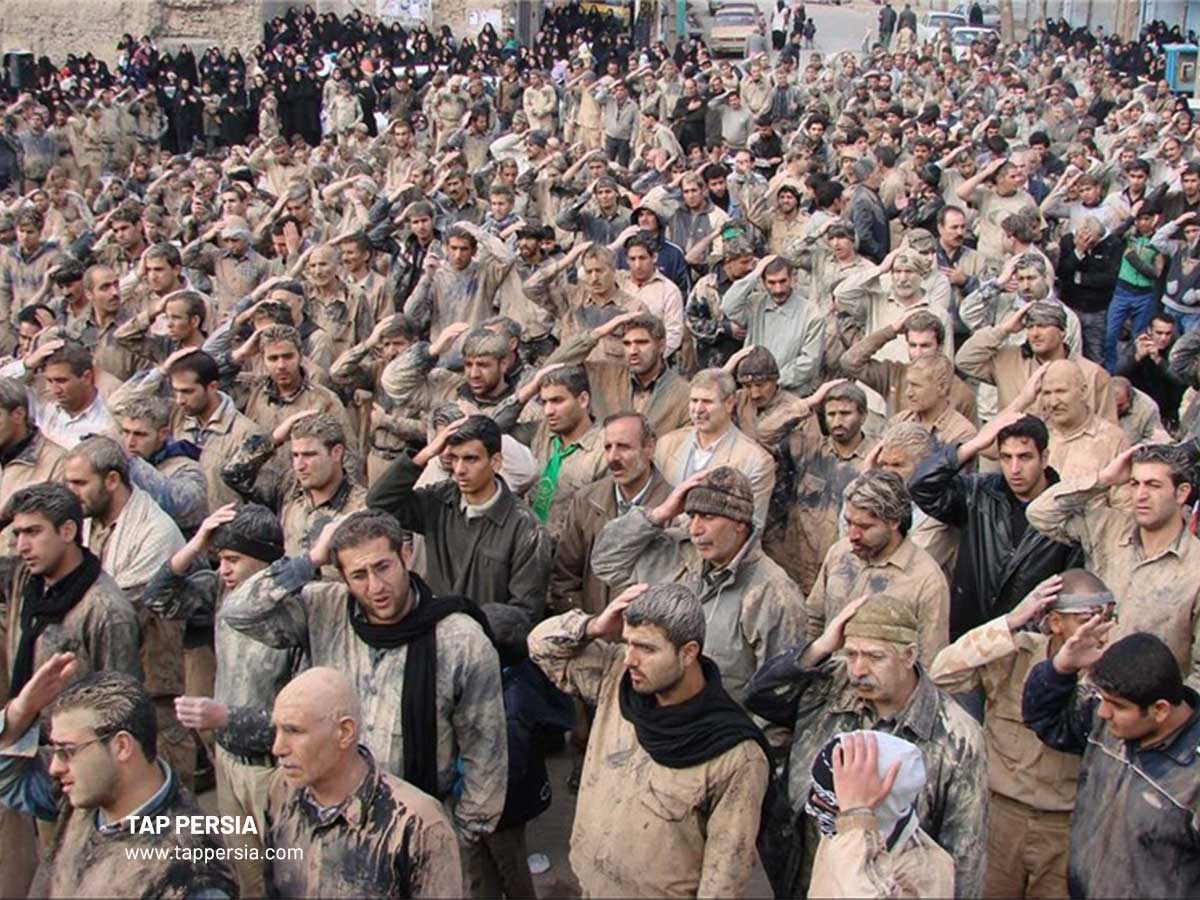
The generous residents of the province of Lorestan are widely recognized for their unique religious rites for Imam Husayn. In their culture, rubbing mud and dust on one’s head and shoulders represents despair and mourning at the loss of a loved one. As a result, three days before Ashura and when the celebrations start, locals in Khorramabad create mud pools in the city’s main squares. Men cover their bodies and heads with mud. People start pounding their chests while being covered in mud as the sermons and shouting began. This unusual ceremony lasts for three days.
5.Mash’al Gardani (Carrying the Torches): A Fascinating Sight of the Rythmic Dance of the Flames
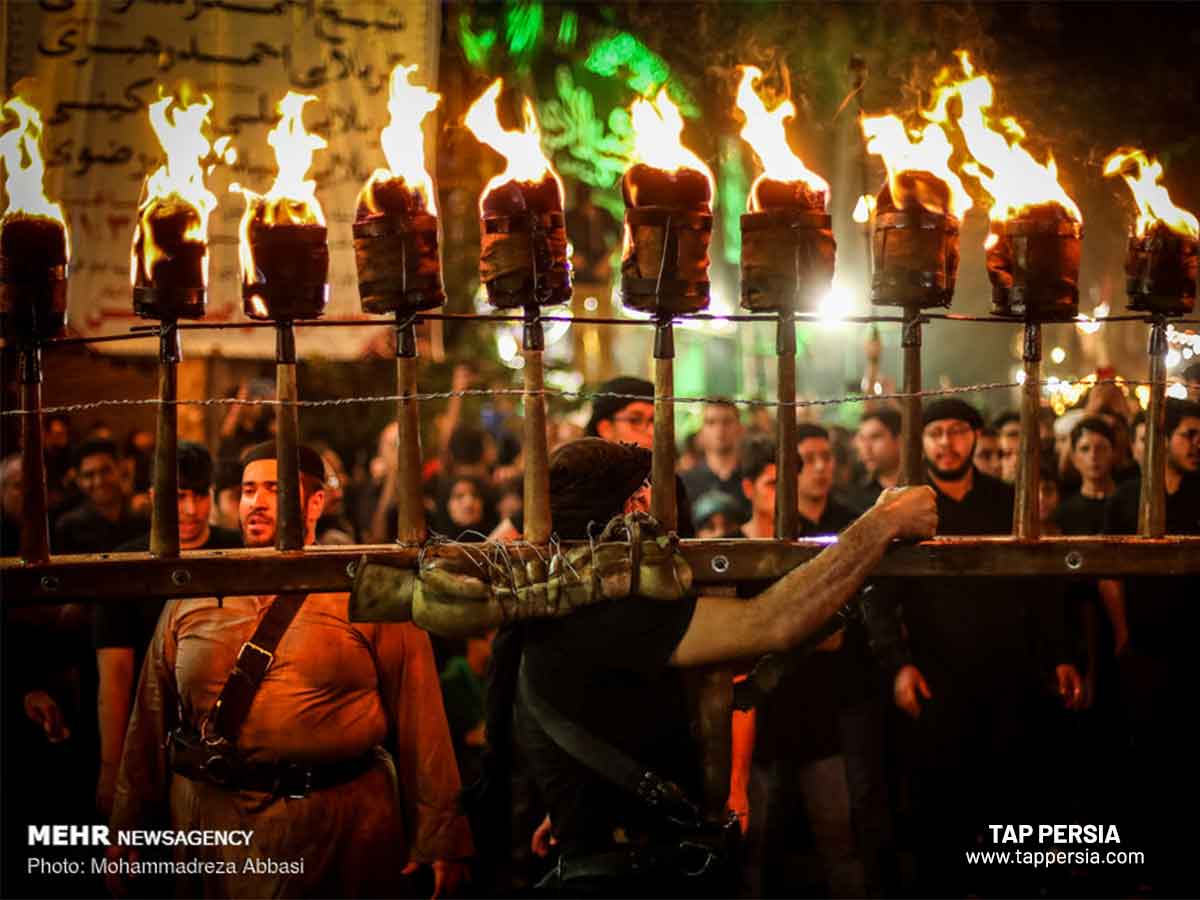
Mash’al Gardani is a different mourning custom that is popular in Arab neighborhoods or towns like Tehran (districts including Shahr-e-Rey and Dolat Abad), Mashhad, Qom and Ardakan. Men flip a building around and carry it on their shoulders with torches mounted on it. Chest-beating and elegies are spoken throughout this religious ceremony. In the pitch-blackness of the night, it is magnificent to see the flames and the rhythmic dance of their lights in the air as men spin them from above.
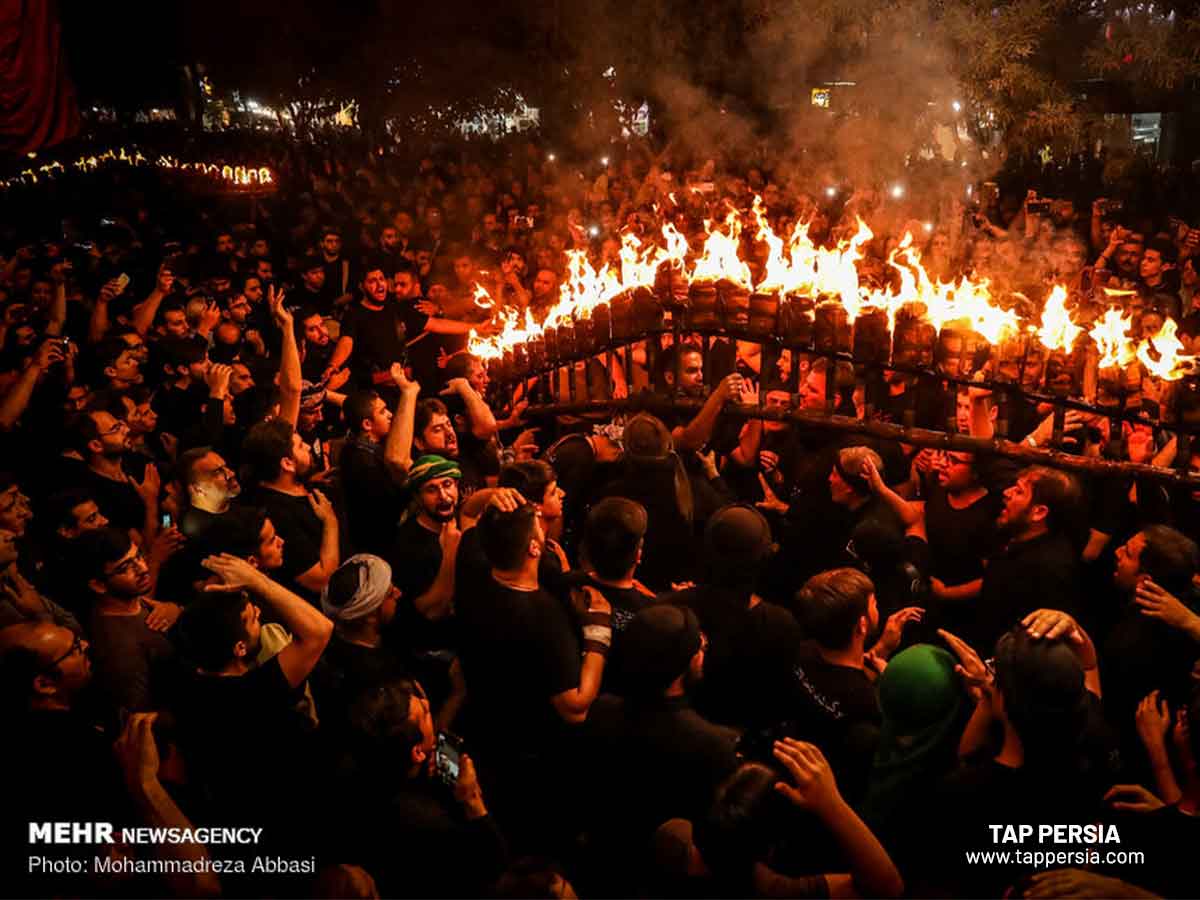
6.Tasht-Gozari (the Basin of Water): A Unique Ceremony of Drinking Sacred Water
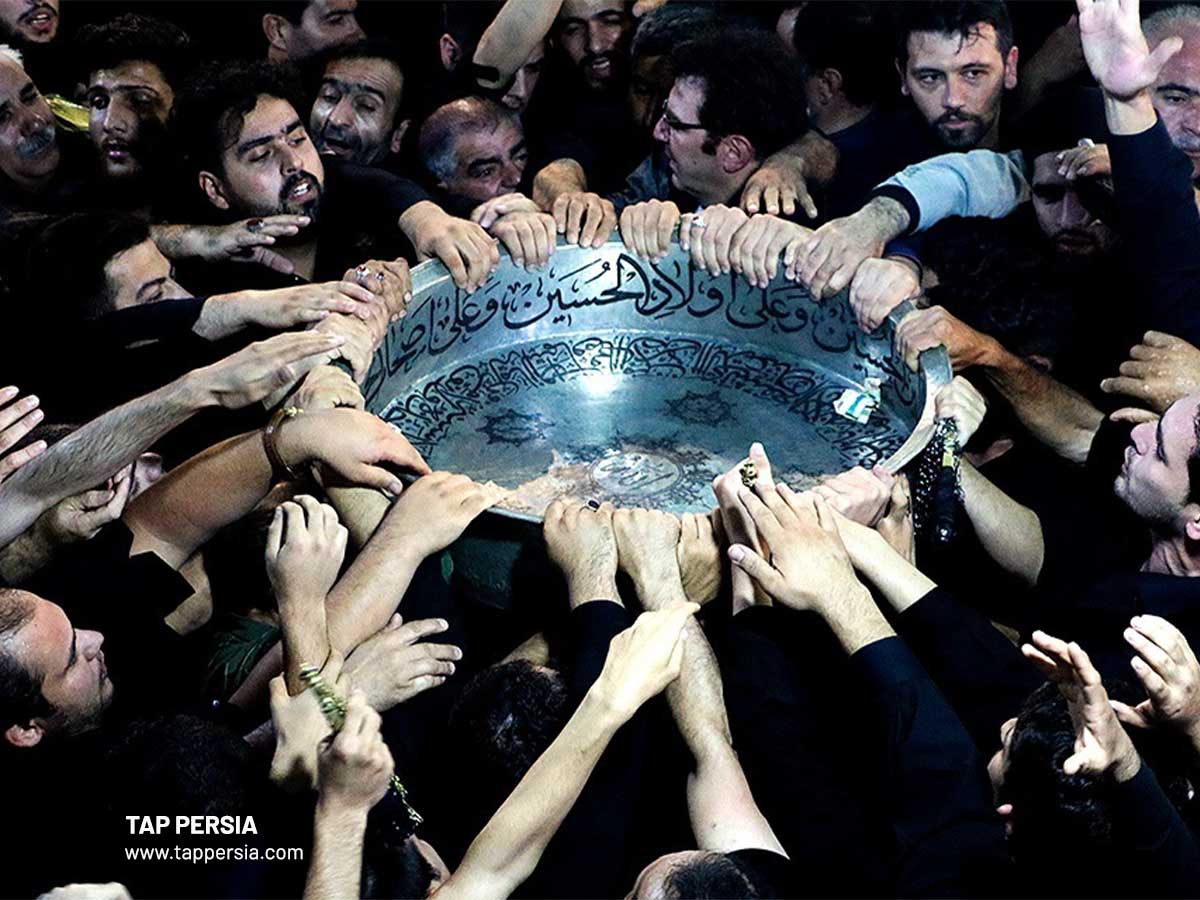
The city of Ardabil is well-known for its distinctive Tasht-Gozari mourning ritual. In this ritual, bereaved men carry a large bronze or copper water-filled bowl around mosques or prayer rooms while they are in mourning. Everyone has the opportunity to sip a little water from it. This event, which is among the oldest in Iran, alludes to the struggles Imam Husayn and his disciples had when they were without water. This unique mourning service is accompanied by singing and elegies in the Azari language, which adds to its amazingly calming atmosphere.
7.Shâm-e-Qaribân: Commemorative rituals and gatherings during Ashura
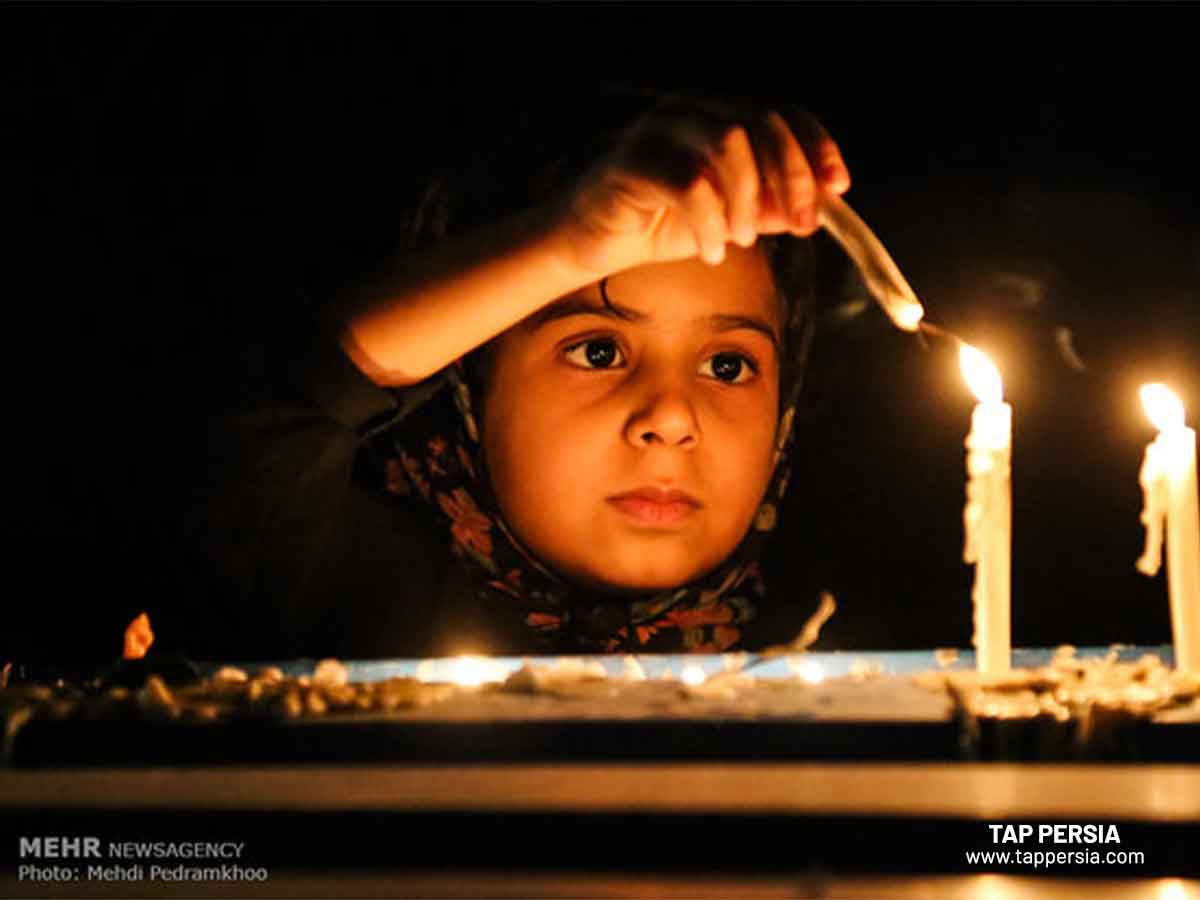
Just picture the candles that are glowing all around you as you go by, attracting children and adults who are sitting and looking at them with sadness. Ashura’s evening and night are referred to as Sham-e Ghariban, which is Arabic for “the night of the forsaken.” The orphan youngsters whose tents were set on fire by their adversaries and abandoned in the dark are mourned by the public. On the tenth day of grief in this month, it has been customary to burn a tent and light candles for the abducted children while listening to preachers. This is a great experience if you want to travel to Iran at the time of Ashura.
Practical Tips for Traveling to Iran during Ashura
You now know that visiting Iran during Muharram and Ashura may be an amazing experience because of the country’s rich religious and cultural heritage. Therefore, don’t wait to prepare your bags for this thrilling adventure. However, there is other crucial information to be aware of before deciding to travel to Iran at the time of Ashura:
- On Muharram, especially the day of Ashura, the entire nation is in black. It is polite to wear all black or gloomy colors if you are attending an event, even if it is just for the sake of observing. Neutrals are OK, but red and strong colors should be avoided. They stand for all that is wicked in the Karbala conflict.
- On this day, all government offices, academic institutions, athletic venues, bazaars, and museums are closed.
- The majority of attractions, including museums, will be closed on Tuesday, September 18, 2018, for Tasu’a, and Wednesday, September 19, 2018, for Ashura. The majority of eateries and grocery stores in Iran will be open during Ashura and Tasu’a.
- Bloodletting is prohibited for the whole month. Nothing about this is symbolic. According to the law, blood money increases by a third during Muharram.
- As a sign of respect for Imam Hossain, people refrain from hosting large celebrations or weddings during the month of Muharram. Some others even say they won’t watch television or listen to music for the first 10 days. These days, if you get in a cab, the music will probably be some melancholy, heavily exaggerated version of the Karbala tragedy.




Comment (0)